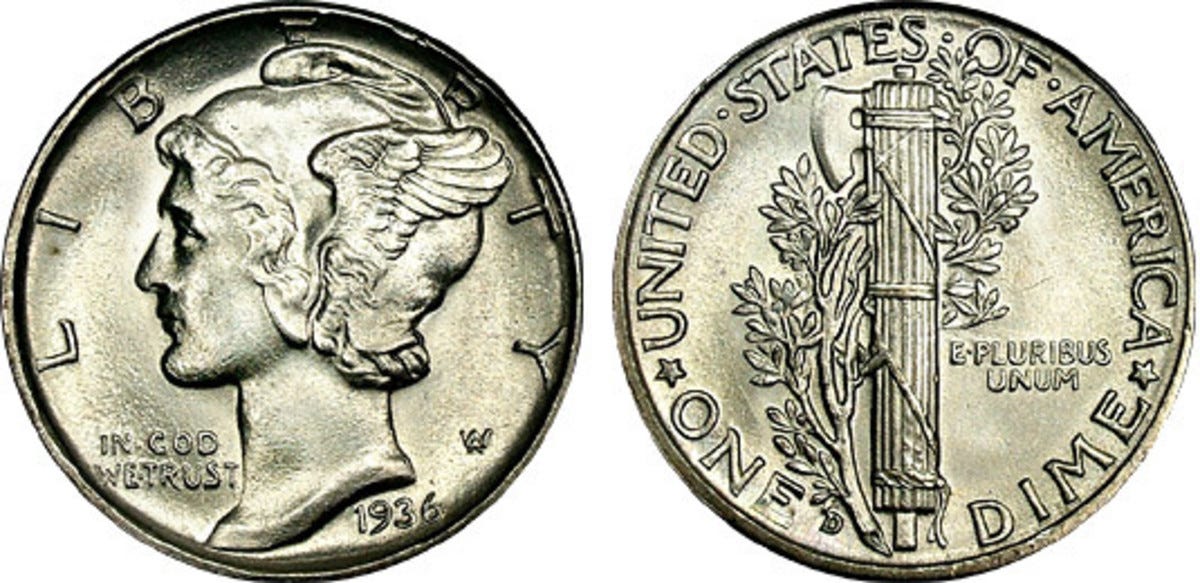Do you know who you are? Are you sure? Can you name your great grandparents? Do you even know your grandmothers’ maiden names? What about their mothers’ maiden names? Our ancestors placed great importance on knowing oneself, and knowing the Truth. The Truth can be defined as what is, or all that is. The Truth is a result of what was, or all that was.
Nature has its cycles, whether seasons, days, hours, or the lives of its inhabitants, be they flora or fauna. The same can be said for nations and anything created by man. This death and birth cycle is mirrored across all scales of existence, by the sun and our own lives, for it is a mechanism of the creation that ensures stability through change. It is to our benefit that nothing lasts forever because it means despotism cannot last forever. No matter how bleak the night is, dawn will come. No matter how barren winter is, spring will come. The Latin word for sun, which is sol, is phonetically and philologically identical to the word soul.
Learned men warned about the cycles of history repeating, or rhyming, that history is a narrative composed of lies agreed upon. Whether we like it or not, we are living in the end-stage of an empire. It is also the time of year that reflects the end-stage of the yearly cycle, where the sun is at its lowest point, the solstice, meaning sun-still, where it’s about to be reborn and begin its journey back to the vernal equinox, or Passover.
With the current election cycle, regardless of the outcome, there will be a significant portion of the population that adopts a false sense of despair, that they just lost their country, while another portion will adopt a false sense of security, that their country will improve. This feeling will last until the next election cycle, where it’ll reset. Politicians don’t make a nation great. Its people do. It is the people that make a city beautiful. The way we behave and treat each other will impact our community more than anything else, so don’t lose your code of honor or ethics when circumstances change.
There are always lessons to be learned, values to be added, and successes to be had, regardless of the cycle. Failure only exists if you don’t try and wish you had tried. Making lifestyle changes starts with mindset changes. No one owes you anything. Treat your life like a business and look for ways to improve it. Do not despair. Your mindset will determine the quality of your life, regardless of the cycle you live in. It will benefit you to be aware of the climate, and help others become aware of it, because only through a shift in mass awareness will people take constructive action (without violence) to change it, so that the system returns to an impartial rule of law for the benefit of all.
Becoming the best version of yourself will benefit your family, friends, and community. Once you’ve helped yourself, you’ll be in a position to help others. Choose victor consciousness over victim consciousness. Victims are powerless to change their circumstance. Victors take responsibility and make it happen. Perceived problems are blessings to help you overcome obstacles and level up your character. Rest assured, there will be a never-ending cycle of problems and solutions. Each set of problems solved will level you up and introduce a new set of problems to find solutions for. So don’t let the results of elections impact you enjoying life this holiday season and beyond. Discontent is important for motivation, but don’t let politics derail you from enjoying life with those you love. Tomorrow isn’t promised, so enjoy today, no matter what challenges lie ahead.
From the Temple of Delphi’s inscription “Know Thyself” to the Biblical passage “And ye shall know the Truth, and the Truth shall make you free” (John 8:32), it’s clear that our ancestors revered knowledge. Even the root word of King is to know, which is ken, or knowledge, because a king must know things to write the law. This begets the Saxon Cyning, a king, as well as the Gothic Khaan, also a king. Khan is cognate with Cohen, which is a priest.
An indirect obstacle we face in knowing ourselves is the amount of forgeries and lies about history that were foisted upon us by the nobility to make us think they have a divine right to rule. There is not a manuscript from the ancient world that didn’t pass through the hands of the priests, who’ve committed forgery and revisions to suit their whims for as long as they’ve existed. Your legal name, in all capital letters that you see on everything related to commerce (i.e. FIRST MIDDLE LAST), is based on trusts that were ecclesiastical. The ecclesiastics take their name to symbolize being called out by God, or chosen to be the shepherds of men. The ecclesiastical subversion of America took place with the Act of 1871, but the current system we’re in is a result of the Emergency Banking Relief Act of 1933, which no vote will change, no matter how hard you campaign.
Fascism is the merger of Corporate and State Power. The root of Fascism is fasces. There are two fasci on each side of the American flag in the United States Senate. The symbol was adopted in 1789 prior to the Fascist movement that developed during World War I.
A fasces is on the reverse side of the Mercury dime. America is living under fascism at the moment. It’s been this way for several generations, before most of you were born. You don’t need to drop what you’re doing to focus on politics or ruin relationships by lecturing people about what’s going on in the world.
Most people are under the impression that the fasces is a Roman symbol, and it is, but it originated with the Italian Empire prior to the Roman one. According to the Latin poet Silius Italicus, “And Vetulonia, the pride, once, of all Etruria. That city gave us the twelve bundles of rods that go before a consul, those twelve axes with their silent menace, she first adorned the high curule chairs with ivory, and first trimmed official robes with Tyrian purple; while the bronze trumpet that stirs the warriors, that too was her invention.”
Fascio is also a word for beam in Italian, as in beam of light, in addition to pertaining to wood, so in my opinion, the fasces signifies the light of the sun, or the generative power of God, similar to the obelisk.
Tyrian purple is what the Phoenicians were allegedly known for, a color reserved for the rulers, enforced by the penalty of death were someone to be caught selling it or wearing it (according to the Justinian Code), yet here we have an account that it was the Etruscans in Vetulonia who first used it for their robes. Tyrian purple dye was produced from the shells of snails, claimed to be from Lebanon, but these snails can be found along the coasts of the Mediterranean.

What do you know about the Etruscan Empire? If you’re of European descent, your history is connected to them. The Etruscan languages are indigenous to Italy and their alphabets are Pelasgian, which are Phoenician. The status quo taught us the Phoenicians came from the Orient, but language, mythology, alphabets, archaeology, and much more suggest that this is not the case. The ancient Italian languages are not Indo-European, and there is no archaeological evidence of mass migration into Italy from the north or east in the first millennium BC. Urnfield culture spreads from the south to the north in Italy, which indicates it is of Italian origin, and that the Celtic-Germanic-Gaulic-Nordic use of it is a result of them being an ancient diaspora from Italy, not from Scythia, who even the status quo admit are descended from the Pelasgians (Holy Sailors).
Dionysius of Halicarnassus wrote, “Indeed, those probably come nearest to the Truth who maintain that the Etruscan nation migrated from nowhere else, but was native to the country,” as well as, “Myrsilius of Lesbos does not call the people Pelasgians, but Tyrrhenians (Italians; Etruscans). And the same people were called by the rest of the world both Tyrrhenians (Italians; Etruscans) and Pelasgians.”
Thomas Astle wrote (Orig. Prog. Writ.), “The Punic letters are called Tyrian, and are much the same as the Carthaginian or Sicilian; they were an early branch from the Phenician stock: to make a complete Punic, Carthaginian, or Sicilian alphabet, we must admit several pure Phenician letters. The Pelasgi were of Phenician original.”
Michael Grant wrote (The Etruscans), “When the oldest Etruscan inscriptions in this northern region appear in about 530 BC, they are seen to employ the form of alphabet that prevailed at Clusium, and by the beginning of the following century this had spread right up to Venetia in the north-east, becoming the foundation of the Venetic, Illyrian and Raetian alphabets, and the basis, too, of German and Scandinavian runes.”
William Betham wrote, “It has been said that this language (Phoenician) was Hebrew, or had a strong affinity to it; but the best Hebraists have tested it without success, for the results have not enlightened the world. The Celto-Etruscan has not only an affinity, but its similarity is almost universally applicable to every Phœnician and Etruscan inscription to which it has been applied.”
The Tyrrhenians, another name for Etruscans, are admittedly called Pelasgians. The Pelasgian letters are admittedly of Phoenician original. Britain was peopled by Phoenicians, yet everything they have pertaining to language traces back to the ancient Italians. It follows logically that the Etruscans are the Phoenicians, even though both names are placeholders given to them by subsequent cultures. There is no evidence that they referred to themselves as such, so I call them ancient Italians on account of where their languages originate, which have no affinity to Indo-European, meaning they didn’t come from Greek, Hebrew, or anything else from the east. On the contrary, it appears Ancient Hebrew and Greek were inserted into a chronological place they ought not to be, since they use Etrusco-Phoenician letters. The idea of Semitic language doesn’t even exist till the end of the 18 or early 19th century, but even in that fictitious Abrahamic construct, the Phoenicians aren’t descended from Shem. Archbishop Trench wrote, “It was Eichhorn who first suggested the calling of a certain group of languages, which stand in a marked contradistinction to the Indo-European or Aryan family, by the common name of Semitic.”
A few centuries ago, scholars claimed the word Pelasgos, or Pelasgoi, which are Greek words, originated from the Hebrew word Peleg, a character who was claimed to be a contemporary of Noah. This is an Abrahamic claim, but it’s not something that can be demonstrated. The name Peleg looks like plg in Hebrew (פלג). However, Pelasgos (Πελασγός; singular form), the plural form being Pelasgoi (Πελασγοί), is Greek, not Hebrew. The functions of the letters P and F are represented by the same symbol in Hebrew, called peh (פ), the first letter of Peleg. This is seen in the word Pharaoh (פרעה), which would literally transliterate as proe, proh, froe, or froh. The Latin rendering of Pharaoh is for phonetic purposes. It clearly has the sound of F. Hebrew was a so-called dead language, not introduced as a spoken language till the Middle Ages, which is why the point system was invented to differentiate the pronunciation of certain letters, hence this Hebrew letter פּ signifies P and this one פ signifies F. But this differentiation, or clarity, as a result of the point system didn’t exit in Old Synagogue Hebrew nor in ancient Hebrew, which eventually takes the form of Phoenician, in terms of its alphabet, and is called Paleo-Hebrew. This confusion does not occur in Greek. It uses Π for Pelasgos, which is the Greek P. Pelasgoi (transliteration of the Greek plural form) is Latinized as Pelasgi (plural) or Pelasgians in English form. The interchangeability of this letter P (π), used by the Etrusco-Phoenicians (Pelasgians) at the time, was P and B (and V by the Umbrians and Oscans; their letter for B performs the function of V), not F, i.e. Ιωβ (Job) is pronounced Yove. These ancient mediterranean cultures had other letters to serve the function of F, such as the digamma, which was developed from the Phoenician waw, used by the Hebrew alphabet to serve the function of W, V, and U, not F. You can see this in Etruscan spellings of Minerva (Latin), which looks like MENRFA, but it signifies MENRVA, and you can see in Oscan or Umbrian spellings that it looks like MENRBA. The Latin F comes from the digamma. Its usage as the sound of F seems to become more prominent in later times and eastward from Italy, but that’s just my narrow perspective from looking at the ancient Italian alphabets and then comparing them. It can get more complicated when examining the other forms digamma has taken, i.e. the sigma-tau ligature (st), but let’s not digress. The point is that there is no preservation of the actual pronunciation of Peleg (פלג), transliterated as plg, which could as easily be flg, and is most likely flg based on how Pharaoh (פרעה) is spelled (proe/froh) and pronounced. The Greek letter to signify the sound of F is Φ, which isn’t used in Pelasgos or Pelasgoi. In Biblical Greek, Peleg is spelled Φάλεκ, or Phalek, which is the sound of F and demonstrates that Peleg (פלג; plg) is pronounced like Feleg. This word has nothing to do with Pelasgos, Tyrrhenians (Etruscans), or the people called Pelasgians, which is pronounced with a Latin/English P or B sound, not with the sound of F. The Pelasgians, or Tyrrhenians (Etruscans), had letters to differentiate from F and P (they were not the same letter like in Hebrew), and since the oldest Greek abecedarium turned out to be Etruscan (the Marsiliana tablet), it demonstrates the Greeks never would’ve used a P for Pelasgos if F was meant, as in their rendering of Peleg being Phalek.
Would anyone still claim that the word Pelasgos comes from Feleg, which could as easily be Falag or something similar like Foleg or Fulag? Of course not. You could argue that they are philologically similar, but there is no evidence in the historical record that demonstrates their connection (as far as I can tell). My opinion would be different if the etymology was coming from Italy and seen in the evidence from these civilizations, i.e. inscriptions on tombs, pottery, metal, and the like, but it’s not there in anything archaeologists have presented thus far. The idea of Pelasgians descending from Peleg is coming from the religious minds of Abrahamics who already have and will continue to commit every type of forgery and act of violence to preserve the authority of Mosaic history. This mindset is the very thing thwarting the progress of civilization and humanity as a whole, and it permeates every aspect of society from the branches of government to the education system and the so-called scientific community.
There is no alphabetical system in Europe that doesn’t descend from Italian culture. Astle wrote, “The characters which they afterwards used, were adopted by them in the island (Britain), and though the writing in England from the fifth to the middle of the eleventh century is called Saxon (the architecture in England, which preceded the Gothic, is usually called Saxon, but it is in fact Roman), it will presently appear, that the letters used in this island were derived from the Roman, and were really Roman in their origin, and Italian in their structure at first, but were barbarized in their aspect by the British Romans and Roman Britons.”
Learning about what’s going on in the world can make you angry if you’re unprepared and haven’t acquired a broader perspective. Regardless of how things play out, we won’t benefit from being destructive. Compare it to health. If your body is failing in health, the solution is not to destroy the parts of your body that aren’t functioning properly. The solution is to provide your body with the nutrients it needs to heal. The same can be said for a civilization or culture. We will always be better off building a better system and abrogating the authority of the previous one. Give the gift of this empowerment to those you care about with Spirit Whirled.






If you’re intrigued by the history of Ancient Britain and how it connects to the rest of Europe, read Spirit Whirled: The Holy Sailors. If the real universal empire of Europe, North Africa, and Asia Minor intrigues you, become a member of this newsletter, where I post all of my continual research, podcast appearances, and other updates.








Fantastic read well written dylan... although I'm not a linguist I love your work and your books... I've just started an inner whirled binge again from episode 1 I just can't get enough of it... however myself and languages do not mix well but for some reason I fine it addicting still 🙂